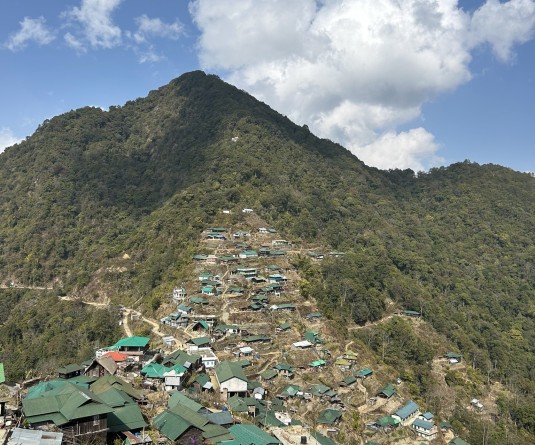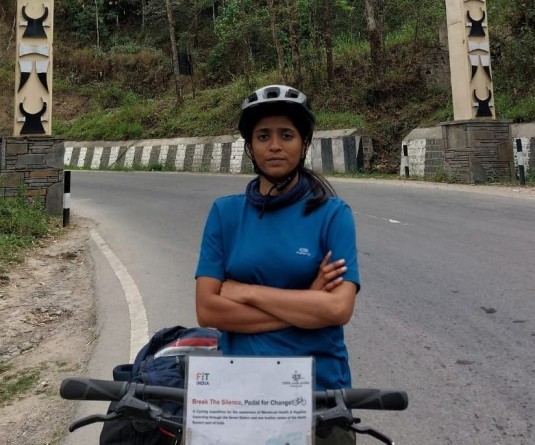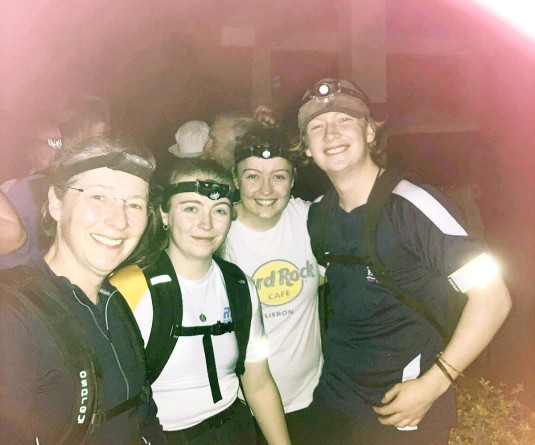Kijümetouma village- Weaving the tradition and beauty of bamboo baskets

75-year old woman, Kozieü Kiekho weaving bamboo basket at Kijümetouma village. (Morung Photo)
Vishü Rita Krocha
Kohima | December 6
In Kijümetouma village, about 45 kilometers away from Kohima, are women breaking barriers, defying the social taboo that women should not engage in traditional weaving and crafting of bamboo products. 75-year old woman Kozieü Kiekho is one of them, who at this age is still keeping herself busy, creating new designs and weaving baskets for her own use and sell the rest.
“I learnt bamboo weaving from my husband and the first product I weaved was a traditional mat that is used for drying paddy,” he elatedly professes. Like most Naga women, she was into traditional back-strap loom, managing to weave her own mekhlas and shawls. “However, I stopped doing that after marriage, having learnt bamboo crafting from my husband and realizing that I enjoy the latter much more. It’s also easier,” she states. A mother of 3 children- 1 son and 2 daughters, the whole family is into bamboo weaving, creating new designs to go along with the changing times.
A farmer by day, who spends hours in the fields, she makes use of her mornings and evenings to engage herself in this exciting process of making different bamboo products. “Through this, I am able to generate some income to buy milk, sugar and tealeaf,” she states.
Kozieü Kiekho is a member of a group called “Kero-Keprü Krotho” that comprises of both men and women in Kijümetouma village and often come together and weave to meet the demand for bamboo products especially baskets. “With plastic being banned now, we get a lot of orders for bamboo baskets and depending on the number of orders, sometimes we gather like this and work together for days”, the president of the group Neizieo Theünuo enlightens. In the past, we have had orders from Nagaland Wrestling Association, Angami Women Association, Angami Public Organisation, also for Sekrenyi Festival, Hornbill Wrestling etc., he adds.
Interestingly, young people in the village are all familiar with the art as the elders are extensively into it. 70-year-old Yatsolie Theünuo puts across that “our forefathers have been doing this since time immemorial and without having to undergo any training, this is a blessing of the village that we have inherited and is being passed on from generation to generation.” “What was once considered a taboo for women to do in the olden days is now also undertaken by women. I think they should do whatever they can and are good at to earn a livelihood,” he further emphasizes.
Another member of the group, Rüdilhou Kiekho says, “If parents are engaged in the art, children also sit around, observe and learn and naturally take on the art.” Right now, he states, “we don’t get any help from the government but we are trying our best to produce quality products with designs that are improvised.” There is no real profit at the moment, he further points out while highlighting that it is quite a long process that starts with looking for raw materials in the jungle, sometimes taking days. However he is optimistic that the production from the village will grow from strength to strength.
The varieties of bamboo products that the group has crafted over the years include traditional basket carriers of different kinds, hand-woven mat generally used for drying paddy, rice barns, bamboo baskets, etc.





